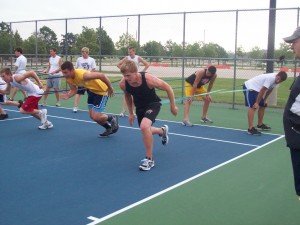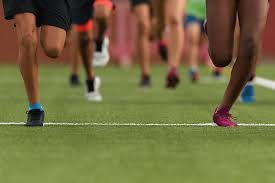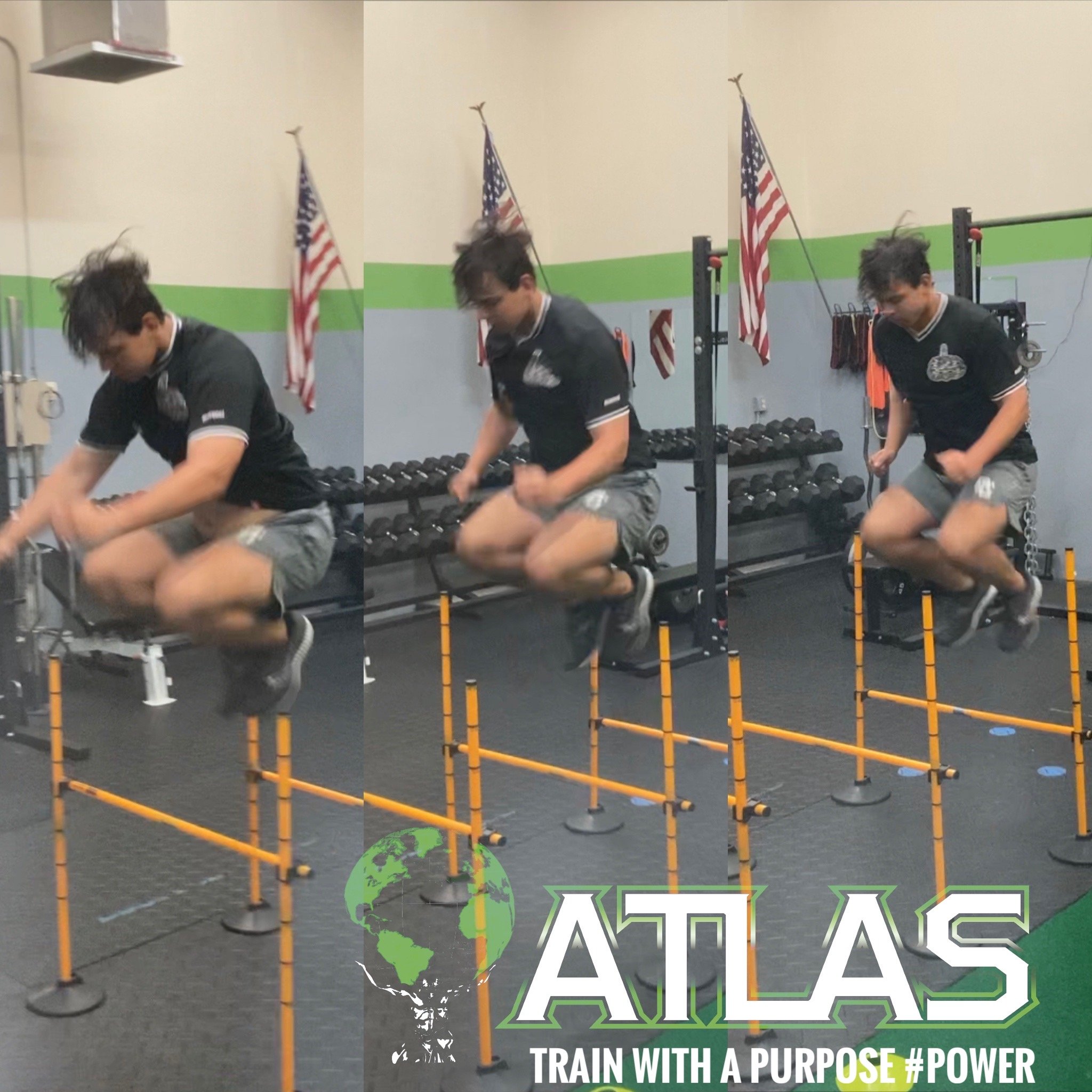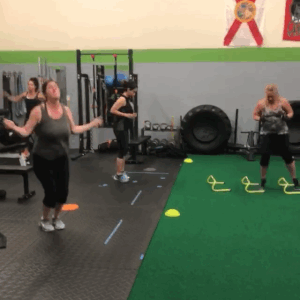
Strength Training for Longevity: Why Muscle Mass is Key to Aging Well
Muscle mass plays a vital role in aging well, not just for strength but also for overall health. As we age, we naturally lose muscle mass—a condition known as sarcopenia. Strength training helps prevent this decline and promotes longevity.
How Muscle Mass Impacts Longevity:
Metabolism Boost: Muscle burns more calories than fat, so maintaining muscle mass can help keep your metabolism high as you age.
Bone Health: Weight-bearing exercises like squats and deadlifts improve bone density and reduce the risk of osteoporosis.

Powering Through: Energy System Development for Peak Stamina in Field Sports and Court Play
In the arena of sports, endurance is the unsung hero that fuels athletes through grueling matches and competitions. Whether it's the endless sprints of soccer, the relentless running of basketball, or the ceaseless pursuits of field sports, stamina is the key to success. At Atlas Performance Training, we understand the significance of cardiovascular endurance in these sports. In this blog post, we'll stress its importance, provide specific training methods and coaching principles for improving energy system development, and discuss how sport-specific endurance training can elevate an athlete's stamina and energy systems.

Flexibility Routines for Unleashing Athletic Excellence
At Atlas Performance Training, we understand that flexibility is the cornerstone of an athlete's success. In this blog post, we will delve into the vital relationship between flexibility and athletic performance. We'll provide comprehensive flexibility routines tailored to basketball, football, soccer, volleyball, rowing, and baseball. Additionally, we'll highlight how improved flexibility not only enhances sports-specific movements and agility but also plays a crucial role in injury prevention.

Speed Training Fundamentals for Young Athletes: Tailoring for Sports Excellence
As a dedicated coach at Atlas Performance Training, we understand the crucial role that speed plays in the success of young athletes. Whether they are aspiring basketball players, football stars, soccer enthusiasts, volleyball champions, rowing contenders, or baseball prodigies, speed is a fundamental aspect of their athletic journey. In this blog post, we will explore the foundational principles of speed training for young athletes, emphasizing its importance in sports performance. Additionally, we will delve into how speed training can be tailored to specific sports to meet the unique demands of each, and we will highlight training techniques and drills suitable for young athletes to enhance their speed and quickness.

Plyometric Training for Explosive Power
Plyometric training is a dynamic and effective method for enhancing explosive power, a critical component of athletic performance. For teen athletes, plyometrics can be a game-changer when executed correctly and safely. In this blog post, we will delve into the numerous benefits of plyometric exercises, offer a range of suitable exercises for young athletes, emphasize the importance of proper warm-up and technique, and explore how plyometrics can complement weightlifting to increase power.

Lifting Up Young Athletes: Power, Precision, and Performance
Weightlifting, when introduced correctly, can be a valuable component of a well-rounded training program for youth athletes aged 12-17. Emphasizing movement proficiency over heavy weights is paramount in this age group, as it ensures safety and maximizes strength development. In this blog post, we will discuss the importance of introducing weightlifting to young athletes with a focus on proper techniques, injury prevention, and how weightlifting contributes to functional strength and improved athletic performance.

Every Push deserves a PULL: Posterior Chain Development
Posterior chain development is extremely important for athletic development and for the prevention of injuries. One of the main objectives for posterior development is to make sure there are no strength imbalances between the front which is the anterior the back which is the posterior during physical activity….

Build a Stronger Kid: Lift and Learn
There is an age old question that goes back as far as I can remember, I tried to find out where or who came up with this myth and google failed to give me the definitive answer. But that is not important, what is important is that we are going to look at the benefits of learning to lift by briefly looking at the process of LEARNING to lift weights, which is based on two important principles. The first principle is developing the young person’s Relative muscular strength, which learning to perform basic bodyweight movements like a push-up, bodyweight squat, and lunge Pull-Ups, etc. with proper form and body control. In developing youth strength training programs for beginners exercises should in my opinion be limited to the use of specific types of resistance equipment like dumbbells, rubber bands, and tubes, with minimal intensity (lightweight) after they have learned how to properly execute the basic exercises that improve their Relative muscular strength. Developing relative strength varies and depends on the commitment of the individual youth, and their parents. After a solid foundation of relative strength has been developed, start developing their Absolute muscular Strength. This is when Free weights and resistance machines are added to the training program, examples of Free weight movements are……

High-Intensity Interval Training
What is the AP HIIT method? Well, it is a training method that I turned into a small group training class in 2015 when I was finishing my bachelor's degree in Fitness and wellness. The concept was developed from a boot camp and a small group training sessions that I ran at the second gym I worked at when I first started. Most boot camps use just body weight for resistance and are really heavy cardio training (at least from the ones that I have attended and or seen) I wanted to include resistance training exercises within the session along with heavy to medium cardio, and core training. One of the main areas that I wanted to focus on was limiting injury but maintaining a medium-high heart rate and allowing the individual to focus on the movement first and not have to focus on counting reps. Here is an example of a training session………

Strength Training: The Foundation of Speed Training for Youth Athletes
Everyone understands that speed kills, but the foundations of training that skill can be developed in athletes of all ages starting with a good foundation of strength training. There are two types of speed, there is linear speed which is running in a straight line and lateral or what I like to call Multi-directional speed which is transitioning from a linear direction to lateral direction at different angles of movement. Both of these types of speed are developed by increasing the force that is applied to the ground, and the only way to increase the force that is applied to the ground and increase your RFD or Rate of Force Development……..
